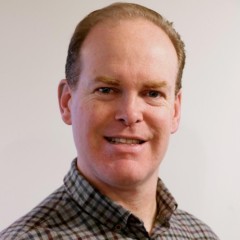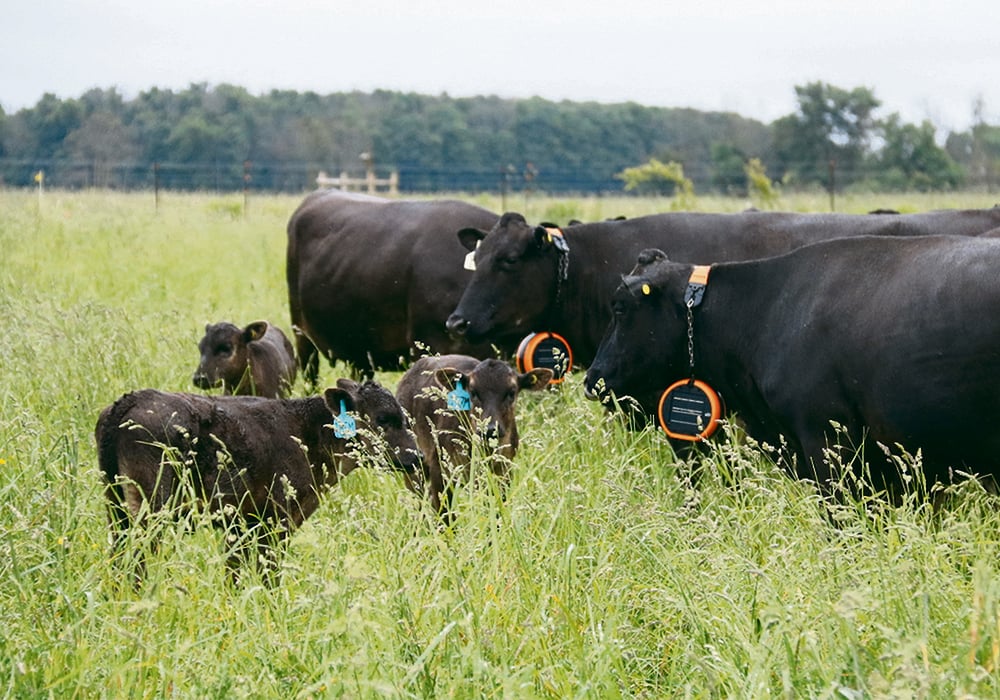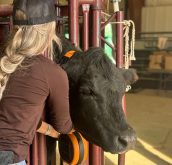An Ontario farm manages two groups of cattle with the new system that is an alternative to new fencing
Glacier FarmMedia – Livestock farmers Jenny Butcher and Wes Kuntz were facing the costly prospect of rebuilding fences. The task was necessary in a pasture they rent, but the rental rate would be higher if the owner had to do the work.
The couple found a new option in virtual fencing and became the first Gallagher eShepherd customers in Canada.
Kuntz and Butcher are dairy and beef farmers near Brantford, Ont., and also run a popular on-farm food outlet, the Little Brown Cow, through which they sell all the milk and beef from their farm, along with other local food products.
Read Also
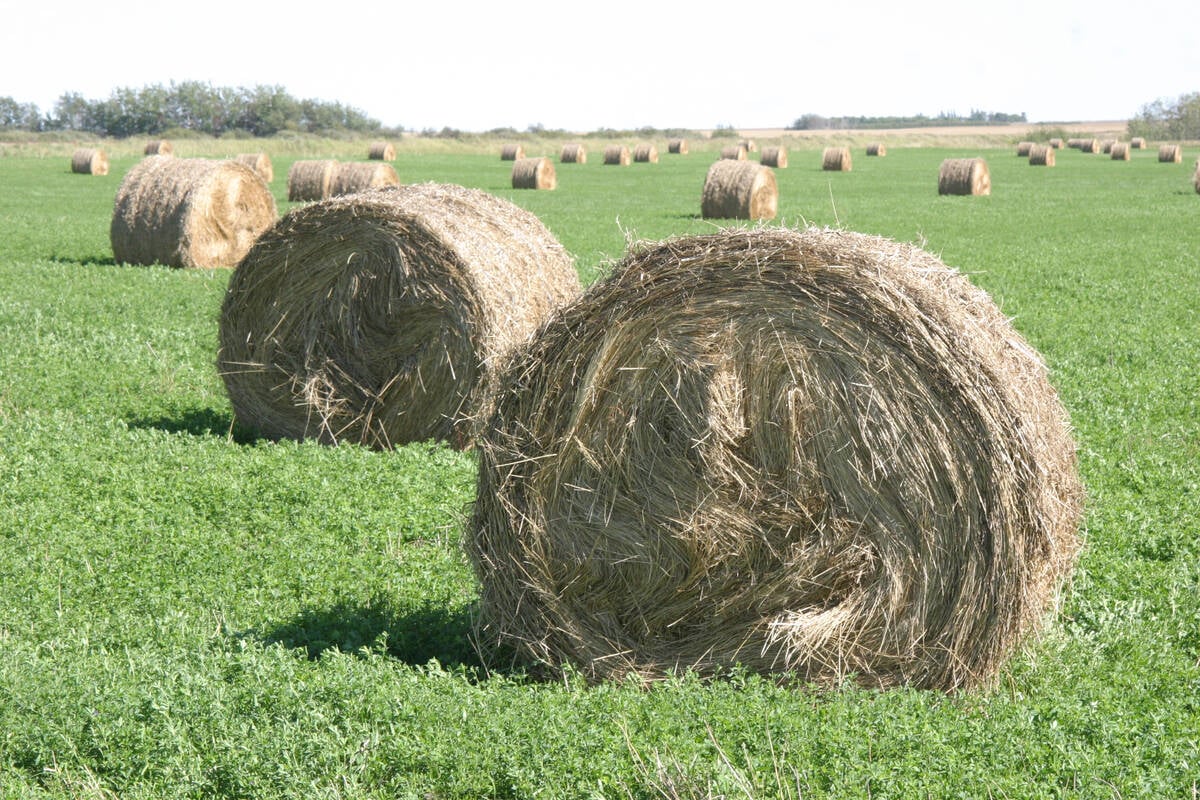
Breaking down successful winter feeding into six steps
It’s that time of year when it is important to start planning for a cow herd’s winter feeding program. Here are six steps I think are necessary to consider when getting your feed tested.
They process milk on site and make cheese and other dairy products. They are busy and a technology solution made sense for their grazing challenges. They now manage cattle movement on their phones or a computer, setting the fence boundaries and moving them as needed.
Kuntz and Butcher spoke at a recent pasture meeting at the farm of Brussels Agri-Services owner Tim Prior. The Ontario business sells the system and Prior is also testing it on his farm.
The cows wear a solar-powered neckband, says Ken Fraser, of Gallagher Animal Management. It weighs about 5.9 pounds and hangs on chains over a cow’s neck. There’s a speaker that gives the cow an audible signal when it is approaching the boundary. If the cow continues, an electric shock can be given through the chains on the side of its neck.
The eShepherd system works best when there’s a perimeter fence that keeps the cattle from roadways or other farms. However, inside that perimeter, there are many options to manage the cattle.
It works especially well for rotational grazing.
“This will allow us to move our animals, scheduled throughout the day, with the click of a button,” says Fraser. It takes about a week to train the animals on the system.
It has several built-in safeguards. For example, it will show an alert when a paddock is created without a water source. It will also stop pulsing an animal once it is beyond the boundary, but it will create a new boundary and gradually move the animal back to its original paddock. Farmers get a notice when a cow goes outside the virtual fence boundary. The individual cow dot on the phone shows direction of movement.
Each animal is tracked by GPS locator so it can be identified on a phone or computer.
Training starts at the perimeter fence as the cows learn about the different boundary warnings as they near the fence.
“It’s like having an electric fence on the exterior fence as well,” says Kuntz.
The system records when each animal has received an electric pulse, so that might help determine when all of the animals have been trained. Butcher has seen more aggressive animals receive a pulse, and others follow those animals away from the fence without getting one.
Kuntz and Butcher’s farm with beef cattle is hilly and has some scrub on it, so running a temporary fence that’s moved regularly is challenging. Now, instead of rolling up the fence to move it, Kuntz says he can change the boundary on his phone.
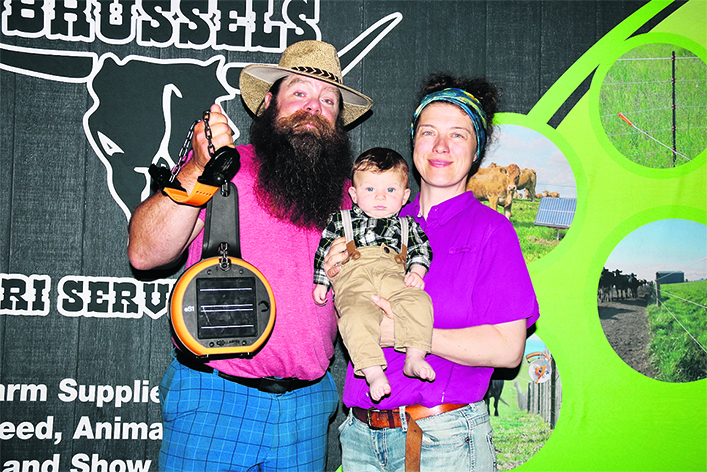
The fence currently beeps the cow first at about 16 feet from the boundary and the pulse of electricity that the cow receives at the boundary is between 1,500 to 2,000 kilovolts.
“It’s just a deterrent pulse, they’re not getting hurt,” Prior says.
The collars cost about $350 and a minimum of 20 have to be purchased. Then there is a $2.50 per month data fee when the neckbands are on and being used, depending on the type of installation. The system can use cell service if it’s available or it can work off of a local area network (known as LORA) set up using a base station.
In the field at Prior’s Grazing Meadows Wagyu farm, the black Wagyu cattle wander through the grass, with no physical fence keeping them constrained. However, the grazing pattern shows that there’s only so far they go before the virtual fence holds them back.
Many of the cows have calves at their side, and the calves have no collar. Prior says the calves might wander off a small distance, but they’ll always come back to their mothers, so as long as the mothers are contained, the calves are as well.

